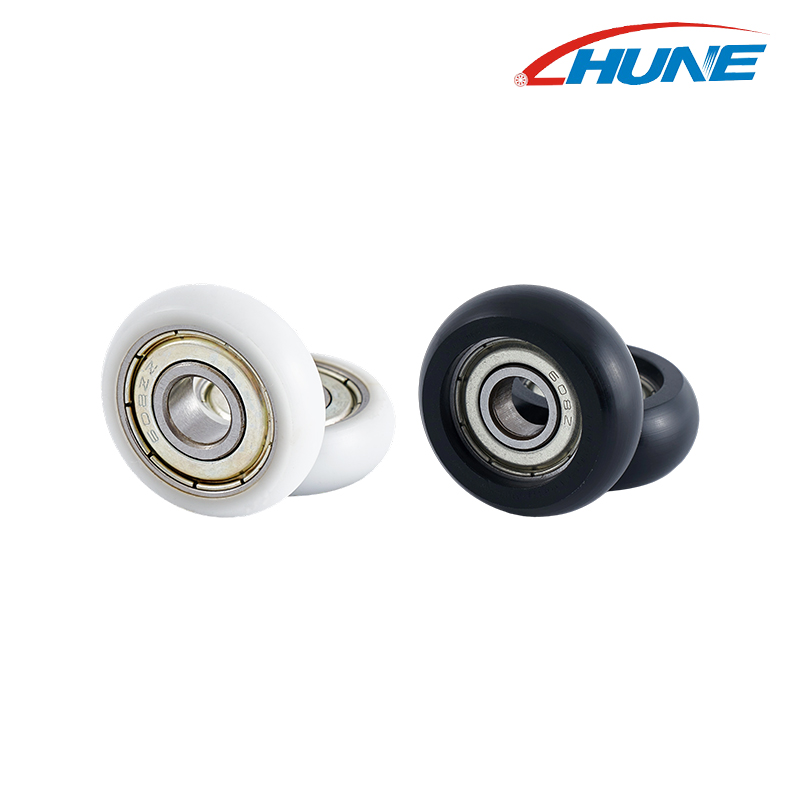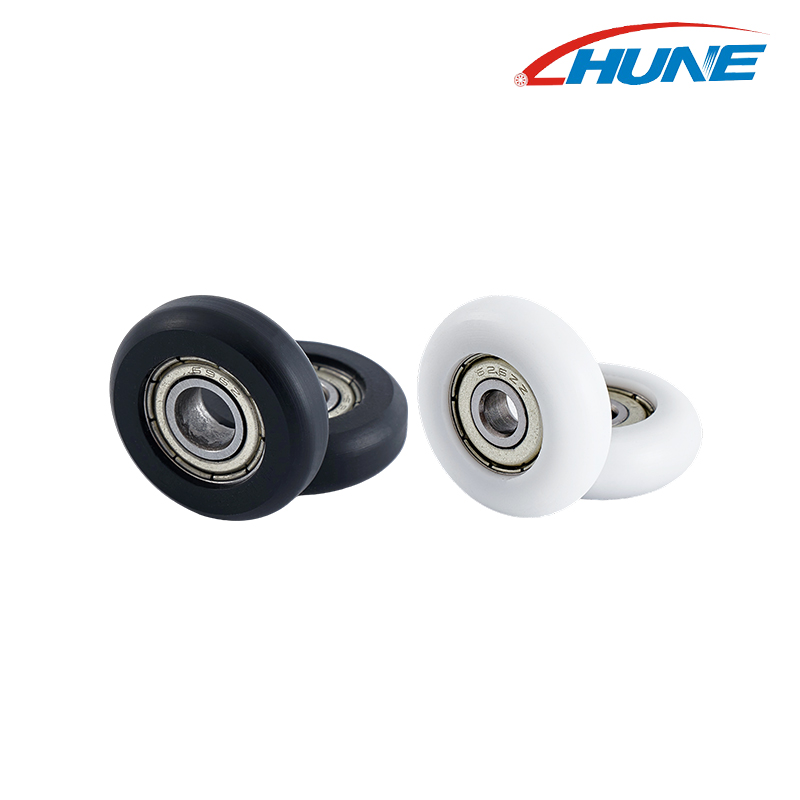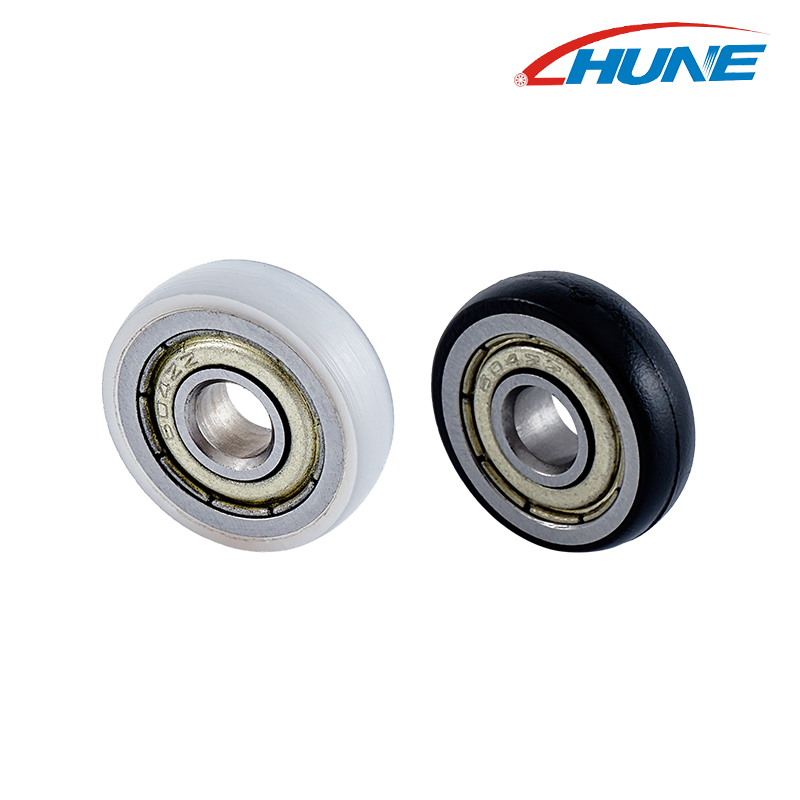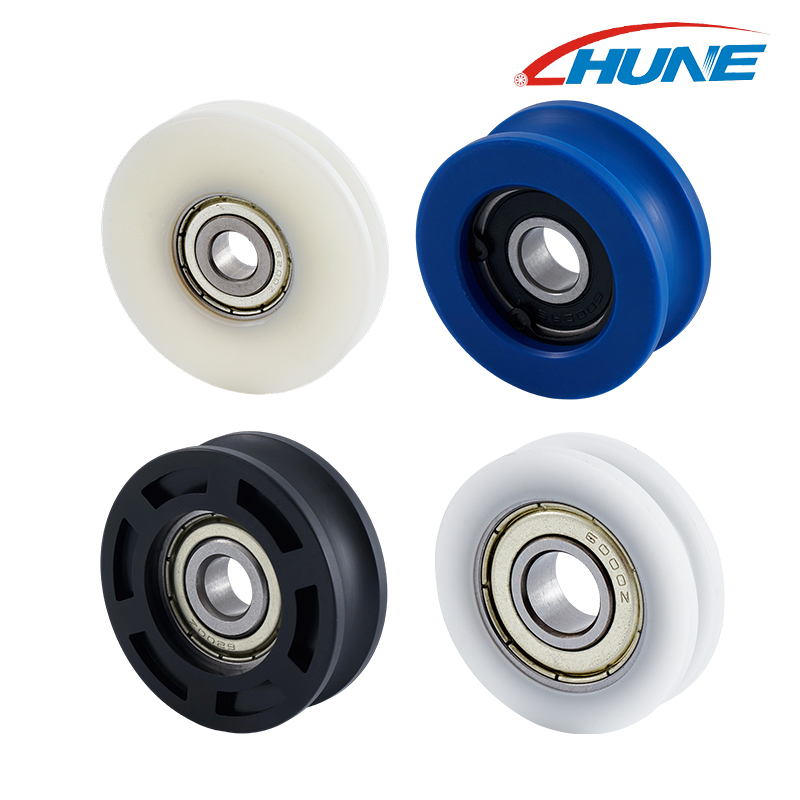Bearing pulleys play a crucial role in modern mechanical systems by ensuring smooth power transmission, precise motion control, and reliable load handling. Unlike traditional pulleys, which rely solely on groove design, bearing pulleys integrate a rolling bearing at the core. This combination significantly reduces friction, improves rotational efficiency, and extends the service life of the entire system.
In conveyor systems, bearing pulleys minimize wear on belts while maintaining accurate alignment, which reduces downtime and energy consumption. In CNC machines and automation equipment, they enhance precision by providing stable linear or rotational guidance, allowing for consistent performance even under high-speed or continuous operation. In heavy-duty industries such as mining, agriculture, and construction, bearing pulleys improve load distribution, ensuring machinery can operate under demanding conditions without premature failure.
The importance of bearing pulleys extends beyond technical performance; they also impact cost efficiency and safety. By lowering friction and mechanical resistance, they reduce power consumption and heat generation, leading to lower operating costs. At the same time, smoother operation decreases vibration and noise levels, which not only protects equipment but also creates a safer and more comfortable working environment.
As industries increasingly demand high-performance and low-maintenance solutions, bearing pulleys have become a fundamental component in mechanical design. They represent the balance between engineering precision, durability, and energy efficiency—qualities that are essential in today's competitive industrial landscape.
What is a Bearing Pulley?
A bearing pulley is a specialized pulley equipped with an internal rolling bearing that allows the pulley wheel to rotate with minimal friction around its axis. Structurally, it consists of three main parts:
Pulley Groove – the track or channel (V-shaped, U-shaped, flat, or round) that guides a belt, rope, or cable.
Bearing Core – typically a deep groove ball bearing, needle bearing, or roller bearing that enables smooth, low-resistance rotation.
Pulley Material – commonly stainless steel, aluminum, or engineering plastics, selected based on load requirements, environmental conditions, and cost considerations.
What Are the Different Types of Bearing Pulleys?
1. V-Shaped Bearing Pulley
The V-shaped bearing pulley features a groove with angled sides, typically ranging between 60° and 90°, that ensures belts or cables remain securely in place. This design improves alignment, reduces slippage, and distributes load evenly across the pulley surface. V-shaped pulleys are widely used in conveyors, CNC machines, elevators, and fitness equipment where precise belt guidance is critical.
2. U-Shaped Bearing Pulley
The U-shaped pulley has a rounded groove that provides gentle support for ropes, cables, or round-section belts. Its design minimizes wear and friction, offering smoother guidance than sharper grooves. U-shaped pulleys are ideal for wire rope systems, sliding doors, curtain tracks, and other applications requiring stable yet flexible handling.
3. Flat Bearing Pulley
Flat pulleys consist of a smooth, un-grooved surface, making them versatile and simple to manufacture. They are suitable for flat belts or tapes but offer less grip compared to V- or U-shaped designs. Flat pulleys are commonly used in light-duty conveyors, textile machinery, and small appliances where high precision or heavy loads are not required.
4. Round Bearing Pulley
The round bearing pulley features a circular groove that closely matches the diameter of round belts or cords. This ensures consistent engagement and smooth operation, particularly in light- to medium-load applications. These pulleys are often employed in compact conveyors, office equipment, and automation systems where space is limited and smooth motion is essential.
5. Custom & Special Bearing Pulleys
For applications with unique requirements, custom bearing pulleys are designed to meet specific load, speed, or environmental conditions. Manufacturers provide OEM/ODM solutions, allowing modifications in groove geometry, bearing type, and material selection. Special bearing pulleys are common in high-speed robotics, precision medical equipment, heavy-duty industrial machines, and outdoor or harsh environments. Innovations include lightweight composites, sealed or shielded bearings, silent operation designs, and eco-friendly materials to enhance performance, durability, and sustainability.
How Do Different Bearing Pulley Types Compare?
V-Shaped Bearing Pulley
Design Features
V-shaped bearing pulleys have an angled groove, typically between 60° and 90°, designed to hold belts firmly in place. The geometry ensures strong contact with the belt, reducing lateral movement and slippage.
Advantages
Excellent belt alignment and grip
High efficiency in power transmission
Reduced wear on belts due to stable engagement
Suitable for high-speed and high-load applications
Limitations and Applications
May exert lateral stress on belts if misaligned
Not ideal for very thick or flexible ropes
Commonly used in conveyor systems, CNC machinery, elevators, and fitness equipment

U-Shaped Bearing Pulley
Design Features
The U-shaped pulley features a rounded groove that accommodates ropes, wires, or round-section belts. The smoother contour minimizes friction and prevents excessive wear on flexible materials.
Advantages
Stable guidance for cables and ropes
Reduced friction and deformation
Quiet operation suitable for sensitive applications
Limitations and Applications
Less suitable for flat belts or very high-speed operation
Widely applied in wire rope lifting systems, sliding doors, curtain tracks, and small-scale conveyors
Flat Bearing Pulley
Design Features
Flat pulleys consist of a smooth surface without grooves, providing a simple and versatile solution for flat belts and tapes.
Advantages
Highly versatile and compatible with multiple belt types
Easy to manufacture and maintain
Lightweight and cost-effective
Limitations and Applications
Limited grip, higher risk of slippage
Not ideal for high-torque or precision-driven systems
Common in light conveyors, textile machinery, and household appliances
Round Bearing Pulley
Design Features
Round pulleys feature a circular groove tailored to the diameter of round belts or cords. This ensures consistent engagement and smooth, low-resistance rotation.
Advantages
Smooth operation for light to medium loads
Compact design suitable for limited-space applications
Reduced wear on round belts
Limitations and Applications
Not ideal for flat belts or heavy-duty operations
Commonly used in office equipment, compact conveyors, and automation systems
Custom & Special Bearing Pulleys

Design Features
Custom bearing pulleys are designed to meet specific operational requirements, including load, speed, environment, or belt type. OEM/ODM services allow manufacturers to provide tailor-made solutions.
Advantages
Optimized for specific industrial needs
Can integrate sealed or shielded bearings for harsh environments
Options for lightweight, silent, or eco-friendly materials
Applications and Innovations
High-speed robotics, precision medical equipment, heavy-duty industrial machines
Outdoor or dusty environments with specialized protective coatings
Sustainable designs using recyclable or composite materials
| Bearing Pulley Type | Design Features | Advantages | Limitations | Typical Applications |
|---|---|---|---|---|
| V-Shaped Bearing Pulley | Angled groove (60°–90°) holds belts securely | Excellent belt alignment and grip; high power transmission efficiency; reduced belt wear; suitable for high-speed/high-load use | May exert lateral stress if misaligned; not ideal for very thick/flexible ropes | Conveyor systems, CNC machinery, elevators, fitness equipment |
| U-Shaped Bearing Pulley | Rounded groove accommodates ropes, wires, or round belts | Stable guidance for cables; reduced friction and deformation; quiet operation | Less suitable for flat belts or very high-speed use | Wire rope lifting systems, sliding doors, curtain tracks, small conveyors |
| Flat Bearing Pulley | Smooth, ungrooved surface for flat belts or tapes | Highly versatile; easy to manufacture and maintain; lightweight and cost-effective | Limited grip; higher risk of slippage; not ideal for high-torque/precision systems | Light conveyors, textile machinery, household appliances |
| Round Bearing Pulley | Circular groove matches round belt diameter | Smooth operation for light/medium loads; compact design; reduced wear on round belts | Not ideal for flat belts or heavy-duty operations | Office equipment, compact conveyors, automation systems |
| Custom & Special Bearing Pulleys | Tailor-made groove geometry, bearing type, and materials (OEM/ODM) | Optimized for specific industrial needs; sealed/shielded bearings for harsh environments; lightweight, silent, or eco-friendly options | Requires custom design; higher cost | High-speed robotics, precision medical equipment, heavy-duty machinery, outdoor/dusty environments |
Key Factors to Consider When Choosing a Bearing Pulley
Load Capacity
The bearing pulley must support the expected load without deformation or failure. Choosing a pulley with insufficient load capacity can lead to premature wear, belt slippage, or mechanical failure. Consider both static and dynamic loads, as well as peak load conditions in your system.
Operating Speed
High-speed applications require pulleys that maintain stability while minimizing heat generation and friction. Pulley design, groove geometry, and bearing type all influence the maximum operating speed. Selecting a pulley rated for your system's speed ensures smooth and safe operation.
Noise and Vibration Control
Excessive noise and vibration can indicate misalignment or inefficient power transmission. Bearing pulleys with precision-engineered grooves and high-quality bearings reduce operational noise and vibrations, creating a safer and more comfortable working environment. This is especially important for indoor machinery, home appliances, and precision equipment.
Durability and Lifespan
Material quality, bearing type, and construction all impact a pulley's service life. Stainless steel, aluminum alloys, and reinforced plastics are commonly used to enhance durability. Sealed or shielded bearings can also extend lifespan by preventing contamination from dust, moisture, or debris.
Environmental Conditions (Dust, Water, Temperature)
The operating environment plays a significant role in pulley selection. For dusty or wet conditions, sealed bearings and corrosion-resistant materials are essential. For high-temperature environments, heat-resistant materials and lubricants ensure stable performance without degradation.
Cost vs. Performance Balance
While high-performance pulleys often come at a premium, selecting a pulley that balances cost and functionality is essential. Over-specification may increase costs unnecessarily, while under-specification risks frequent maintenance and operational downtime. Evaluate total cost of ownership, including maintenance and replacement, when making your decision.
Why Choose Hune Pulley?
Zhejiang Huaneng Micro Bearing Co., Ltd. specializes in the production of high-quality miniature bearings, medium-sized bearings, non-standard customized bearings, and a wide range of hardware pulleys. Their product portfolio includes injection molding pulleys, hanging pulleys, and other specialized pulley series designed for diverse industrial applications.
Hune Pulley products are widely used in:
Home Appliances – ensuring smooth operation and long-term reliability in motors, fans, and household devices
Doors and Windows – providing quiet, stable, and efficient motion for sliding and rolling mechanisms
Mechanical Equipment – supporting industrial conveyors, automation systems, and light machinery
Why Hune Pulley Stands Out:
Expertise in customized and non-standard pulley solutions tailored to specific industry needs
Commitment to durable materials and precision bearings for enhanced lifespan
Global applicability in various industrial, commercial, and residential environments
OEM/ODM capabilities to support specialized and innovative designs
Choosing Hune Pulley ensures reliable performance, reduced maintenance, and a long-lasting solution for a wide range of industrial and domestic applications.






 English
English  Español
Español  日本語
日本語 









